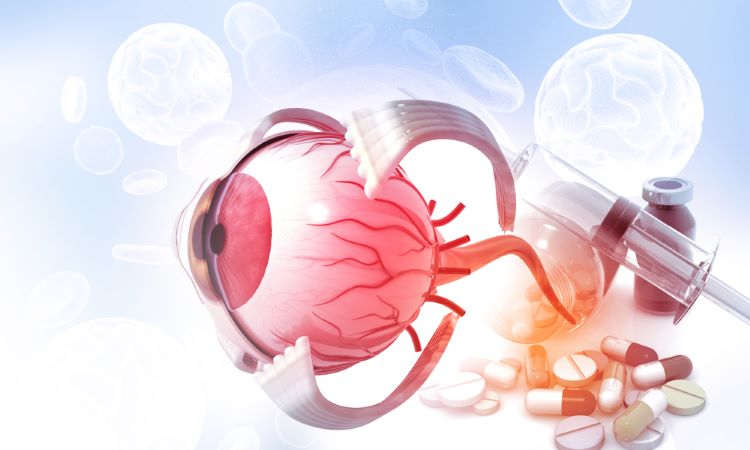Enhancing bioavailability in ocular drug delivery

Innovative technologies were identified as potential solutions for enhancing bioavailability in ocular drug delivery in a research review.


A review by researchers on ocular drug delivery discussed strategies that could enhance ocular bioavailability.
Currently, effective topical administration is challenging as the industry aims to prolong drug residence time and guarantee appropriate ocular permeation. Although many potent drugs are available to treat most ocular complaints, there are barriers such as tear film, corneal and conjunctival. For example, blood-ocular barriers prevent xenobiotic compounds entering the blood stream.
The research highlighted that conventional eye drops are wasted by blinking and tear flow. Therefore, their bioavailability is minimised to less than five percent.
Potential drug delivery routes
Effective ocular absorption requires appropriate corneal penetration and effective precorneal residence time. This enables and preserves an acceptable drug concentration with the minimum quantity of the active therapeutic substance.
Epithelium, part of the eye cornea, allows only the passage of small and lipophilic drug. However, stroma, which is made up of connective tissue, allows the passage of hydrophilic drugs, the authors noted.
Endothelium conserves the transparency of the cornea and allows selective entry for hydrophilic drugs and macromolecules into the aqueous humor. The conjunctiva provides a minor impact to drug absorption compared to the cornea. Yet certain macromolecular nanomedicines, peptides, and oligonucleotides penetrate to the deep layers of the eye absolutely through these tissues.
Eye drops represent more than 95 percent of the marketed ocular products. Administered into the anterior part of the eye, they have a short residence time. Ocular suspensions and emulsions can deliver hydrophobic drugs, but may lead to blurred vision.
How to enhance ocular drug bioavailability
One approach to enhance drug bioavailability after topical administration is increasing corneal permeability. The authors stated this can be done by changing membrane components and/or disrupting epithelial tight junctions using surfactants, permeation enhancers, calcium chelating agents, and modifying physicochemical characters of the ionised drug using ion pairs.
The authors suggested that ocular gels and ointments (semi-solid) could significantly enhance residence time. Solid dosage forms could be used to deliver water-sensitive drugs (powder), provide zero order release model (insert), or sustain residence time (therapeutic contact lens).
Alternatively, enzymatic transformation of prodrug would convert it into the active after appropriate permeation. Finally, applying a low-intensity electrical current (iontophoresis) would enhance drug permeation by electrorepulsion and electroosmosis effects.
Increasing corneal retention time with excipients
One of the techniques to increase corneal retention time is inclusion of excipients. Excipients could be a viscosity increasing polymers. However, high viscous eye drops are irritating for many patients, do not provide an accurate dose and result in blurred vision. The authors noted that in situ gel has sustained contact time compared to simple solutions. Excipients permitting attachment to this mucus gel layer provide a sustained residence time.
Turning to innovative technology
Looking to innovative technology solutions, nanotechnology-based carriers are gaining popularity, the review suggested. This is due to their ability to entrap both hydrophilic and lipophilic drugs, enhance ocular permeability, sustain residence time, improve drug stability and boost bioavailability.
Colloidal delivery nanosystems can carry different drugs, increase bioavailability, reduce frequency and potential side effects and improve patient’s compliance.
Smart nano-micro platforms were cited to have the ability to reveal precise reaction to exogenous (light, sound, and magnetic field) or endogenous (pH, reactive oxygen species, and biological molecules such as DNA and enzymes) factors. The authors explained these were could accomplish site-specific drug delivery. Generally, these systems have been used for cancer diagnosis and management, to enhance the bioavailability of drugs/agents, minimise side effects, and augment safety and efficacy. However, these techniques have extended into ocular delivery in recent years, the researchers stated.
The review summarised that effective management of ophthalmic diseases remains a difficulty, due to many ocular obstacles in the anterior and posterior sections of the eye.
Yet Ahmed et al. concluded that advanced technologies such as those highlighted, have improved drug efficacy and shown good biocompatibility. This suggests the possibility of wide future applications in the management and treatment of ocular diseases.
Further innovations could enhance and preserve eye health, improve patient compliance and accomplish superior results in the management of ocular diseases.



